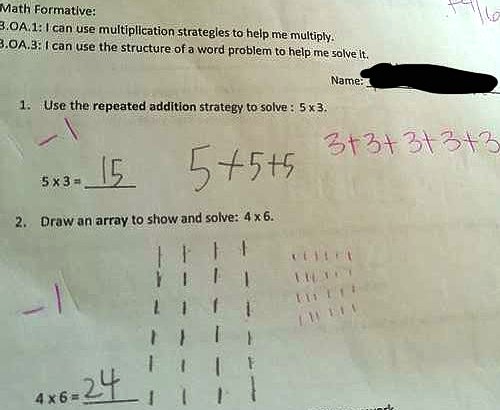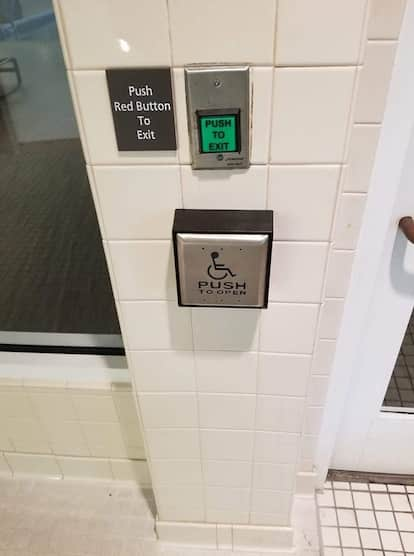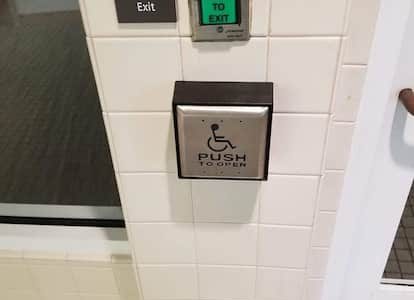Educated out of innovation
In the new economy, innovation and creativity is highly desirable, emotional intelligence and adaptability are more important than ever. But, has the education system kept up? Is it true that education makes us stupid? Are we being educated out of innovation, or is innovation being educated out of us?
Education for grading
Testing and examinations need to be marked and graded – so the questions are written in a way that there is an answer, and that the information given to you is just enough to answer the question – no more, no less.
We are taught to disregard failed attempts. If you try something and it does not work, reject it and never do it again. A failure is a rejection and removal of that thought process.
Equally, we are taught to avoid failure at all costs. We are taught formal techniques for performing problem solving (such as memorising formulas like a2 + b2 = c2), taught the “right way” to perform analysis and experimentation – all because this makes it easier to grade and mark the tests and exams. We are taught rules, formulas – compliance.
What is the “right way” to do this? What if the thing you are doing before has never been done – there is no “right” way. In school, we may have a career counsellor who tells you which career to do – and we normally just comply (and end up miserable), and when changing career direction, we have uncertainty … is this … “right”?
Teachers want us to “show our workings”, where really we need to trust our instincts and experimentation of just trying it. We are conditioned and trained to be able to justify why we have made a decision or come up with a direction or solution. Even when we get the right answer, if the method is not as we were taught, then we are graded as wrong.

On the other side, we are taught to memorise multiplication tables, formulae and rules – which are to be recalled as trusted and “the answer”.
No collaboration
Through our school lives, through every little ‘pop quiz’, test, and examination – we are prevented from working together – even punished if we help each other to get answers or solutions. Education needs to test an individual and not a team – and so if there is an individual who cannot work under pressure, silence, writing by hand, or struggles with just one aspect of the test – then their entire grade is affected.
Education will give students the belief that they should not work together with others, that only their own grade is important, so much that they will cover their work when others are nearby, accuse people of cheating if someone looks at what they are doing, and even complain if they think someone has used their work for inspiration or developed on their initial ideas to produce a solution.
Tests and measures
One childhood memory that has stuck with me – and shaped my development in a positive way – happened when I was around 9 years old. At school, I asked the teacher a probing question – to which he replied;
“that is not in the curriculum and will not be in the exam, so I am not going to teach it to you”
This statement by a teacher was driven by their requirement for me to pass the examination, and to reduce any confusion in me or the rest of the class in learning something that may have been a distraction from the curriculum, but it taught me to punch through formal education and nurture my own education through self development, and to recognise that what I was being taught in the classes is not everything to know about a subject.
Testing is trying to ensure that we have learnt, but the cost is of imagination and innovation. How can you test innovation in a consistent way? For education, learning is broken into subjects, a curriculum defines learning goals and academic standards. This can help teachers understand if the students have passed key measures. However, particularly in higher education, failing of subjects is important to ensure that the University or College has high academic standards and that employers and others can trust that graduates have the expected knowledge and skills.
The Real World
When it comes to the real world – people struggle with the desire to comply with the rules. As everything was laid out for us, we struggle when there is not enough information, or when there is something left over. Solving a problem can be difficult for people who follow rules, expect everything to fit nicely together and are used to everything being handed to them. Have you ever constructed flat-packed Swedish furniture, and found a single screw left over? Your instinct is to go back over the instructions and find out where you went wrong…
Perhaps you have seen others doing this – or even you do… If you are at a buffet, and there are sauces and seasonings at the end, do you see people take a bit of everything? Do you see people have an Indian meal, and add salt and pepper to their food – because it was on the table in front of them? Do you put ketchup on your food, because it was on the table?
Compliance and AI
Compliance is drummed in to us, as good little sheep we are. We must follow the rules, and we are not given the skills to work out what to do when the rules don’t exist, don’t apply – or the rules are wrong. We have to use the software functions and features for what they are labelled as. The software says you must complete an activity, and people are then stuck – but then IT support simply exit and try again, and everything works fine.

When we are taught the rules, there are predictable outcomes. But we are also educated to avoid the unpredictable outcomes – because these cannot be graded by someone who does not understand the innovation.
We take the same approach with Artificial Intelligence – outline the rules and parameters, expect compliance – and then are shocked when the rules are broken.
AI has learned to be sneaky – but this seems to be a pattern in AI, is it really trying to take over the world? It might be, only because it is trying to excel at it’s task.
Modern Art
The Modern Art period is defined by the period 1890 to 1955 – and is typified by the creations not building upon what came before it or relying on the teachings of art academics. Breaking the mould, establishing new paradigms, eschewing traditional techniques and methods. We ended up with Cubism, Surrealism, abstract art, Impressionism movements – all at the time considered to be shocking and in many ways not understood.
The creators of Modern Art were not educated in how to create their art – they had to actively disregard their teachings and the rules, to create something new and innovative. This approach was difficult for the audience to understand at first, as they themselves (such as art critics) had been taught that ‘this is the way it must be done’, and they had to instead disregard their conventional thinking and instead learn to appreciate the new approach.
Teaching innovation
Innovation may need to be taught. Creativity and “thinking outside the square” needs to be encouraged, by re-evaluating old ideas, checking the rules are valid or useful, and by combining multiple “subjects” and skills into coherent thoughts. Life is not divided into subjects – that is only for ease of teaching and testing.
Finally – what is “thinking outside the square”? It is more than the 1970’s Guildford study of going outside the theoretical bounds of a nine-dot square, the saying has roots in the 1960’s term “a square” – relating to conventional thinking and lack of openness. Take the saying this way – think outside of the normal, mix it up, break out of ‘subjects’ and education. Broaden your understanding to have a new view – only then can innovation flourish.
